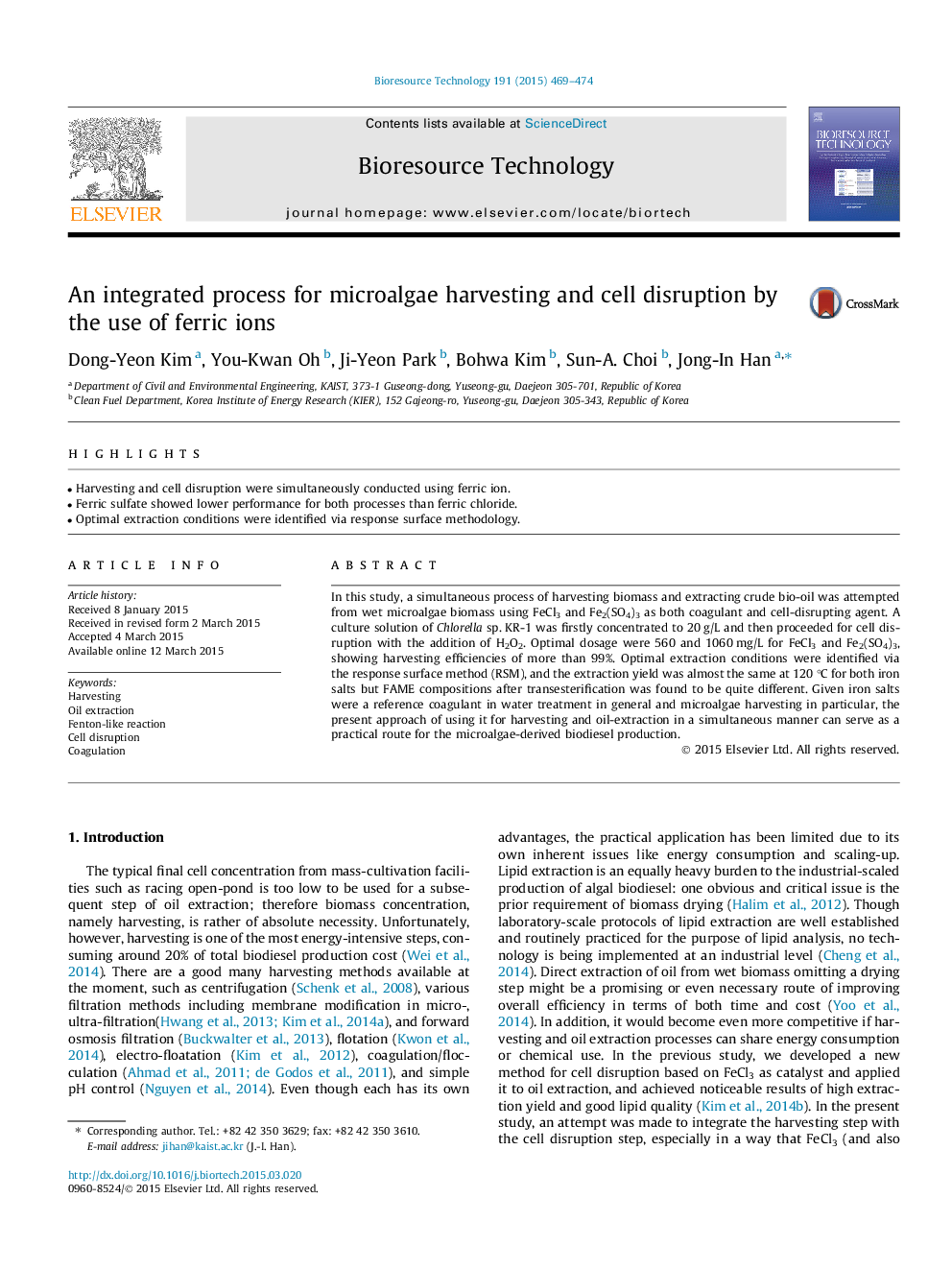| Article ID | Journal | Published Year | Pages | File Type |
|---|---|---|---|---|
| 679559 | Bioresource Technology | 2015 | 6 Pages |
•Harvesting and cell disruption were simultaneously conducted using ferric ion.•Ferric sulfate showed lower performance for both processes than ferric chloride.•Optimal extraction conditions were identified via response surface methodology.
In this study, a simultaneous process of harvesting biomass and extracting crude bio-oil was attempted from wet microalgae biomass using FeCl3 and Fe2(SO4)3 as both coagulant and cell-disrupting agent. A culture solution of Chlorella sp. KR-1 was firstly concentrated to 20 g/L and then proceeded for cell disruption with the addition of H2O2. Optimal dosage were 560 and 1060 mg/L for FeCl3 and Fe2(SO4)3, showing harvesting efficiencies of more than 99%. Optimal extraction conditions were identified via the response surface method (RSM), and the extraction yield was almost the same at 120 °C for both iron salts but FAME compositions after transesterification was found to be quite different. Given iron salts were a reference coagulant in water treatment in general and microalgae harvesting in particular, the present approach of using it for harvesting and oil-extraction in a simultaneous manner can serve as a practical route for the microalgae-derived biodiesel production.
